Supermarine Spitfire FR Mk.XIV 1/48
29,95€
Only 1 left in stock

*Please check our Privacy Policies to see how to we use your personal data.
*Por favor revisa nuestra Política de Privacidad para ver como tratamos tus datos personales
Continuing the wartime development of the famous Supermarine Spitfire, the Mk.XIV saw the classic shape of Mitchell’s celebrated fighter paired with the awesome power of the new Rolls Royce Griffon engine. The resultant aircraft was superb and one of the RAFs most capable fighters of WWII, proving particularly successful when employed against the V-1 flying bomb attacks which Germany launched against southern Britain, from the summer of 1944.
The adoption of the Rolls-Royce Griffon engine provided the Spitfire with a significant increase in performance, but not without presenting Supermarine designers and pilots converting to the aircraft with a few challenges. Installation of the new engine in the existing Spitfire airframe required a redesign of both the front and rear sections of the aircraft and the use of a distinctive five bladed Rotol propeller. Pilots used to flying Merlin engined versions of the aircraft would find the Griffon turned in the propeller in the opposite direction and whilst the earlier aircraft tended to veer to the left on take-off, the Griffon powered machines would veer in the opposite direction if the pilot forgot and applied their usual corrective inputs, their first flight could be a particularly short and uncomfortable one.
As the only British fighter type to remain in production throughout WWII, the Spitfire was constantly developed to ensure it remained at the forefront of fighter performance, with the Griffon powered aircraft being around 80 mph faster than the original Mk.I machines. With the purr of the early Merlin engines replaced by the throaty growl of the mighty Griffon, these later developments appear to be much more capable versions of the fighter than the classic early Spitfires, even though they are basically a development of them. The Griffin powered Spitfire Mk.XIV possessed greater performance than that of the thoroughbred Mk.IX and therefore was superior to both the Luftwaffe’s Focke Wulf Fw 190 and the latest versions of the Messerschmitt Bf 109.
Taking part in air operations in support of and in the months following the D-Day landings, the Mk.XIV was used extensively by the 2nd Tactical Air Force, equipping all 20 of the Spitfire Squadrons that operated from the continent in the months between D-Day and VE-Day. Employed predominantly in an armed reconnaissance role, these fearsome fighters would search for targets behind German lines, attempting to disrupt both their retreat and their ability to send reinforcements to the current front line. Their speed also made them an ideal aircraft to help counter the growing Doodlebug threat endured by southern Britain in the months following Operation Overlord and the D-Day landings.
Tech Specs
Item Length – Without Packaging (cm) 19.5
Item Height – Without Packaging (cm) 7.6
Item Width – Without Packaging (cm) 20.7
How many pieces will be found in the box opened by the customer? 118
Item Scale 1:48
Contents: Sprues & decals
Number of Scheme options 2
Skill Level 3
Flying Hours 2
Wingspan (mm) 207
Continuando con el desarrollo en tiempos de guerra del famoso Supermarine Spitfire, el Mk.XIV combinaba la forma clásica del célebre caza de Mitchell con la impresionante potencia del nuevo motor Rolls Royce Griffon. El avión resultante era soberbio y uno de los cazas más capaces de la RAF durante la Segunda Guerra Mundial, demostrando ser especialmente eficaz cuando se empleó contra los ataques con bombas volantes V-1 que Alemania lanzó contra el sur de Gran Bretaña a partir del verano de 1944.
La adopción del motor Rolls-Royce Griffon proporcionó al Spitfire un aumento significativo de sus prestaciones, pero no sin plantear algunos retos a los diseñadores de Supermarine y a los pilotos que se convertían al avión. La instalación del nuevo motor en el fuselaje existente del Spitfire requirió un rediseño de las secciones delantera y trasera del avión y el uso de una distintiva hélice Rotol de cinco palas. Los pilotos acostumbrados a pilotar versiones del avión con motor Merlin se encontrarían con que el Griffon giraba en la hélice en dirección opuesta y mientras que los aviones anteriores tendían a virar a la izquierda en el despegue, las máquinas propulsadas por Griffon virarían en dirección opuesta si el piloto olvidaba y aplicaba sus habituales entradas correctivas, su primer vuelo podría ser particularmente corto e incómodo.
Siendo el único caza británico que se mantuvo en producción durante la Segunda Guerra Mundial, el Spitfire fue desarrollado constantemente para asegurar que se mantuviera a la vanguardia del rendimiento de los cazas, siendo los aviones propulsados por Griffon unos 130 km/h más rápidos que las máquinas originales Mk.I. Con el ronroneo de los primeros motores Merlin reemplazado por el gruñido gutural del poderoso Griffon, estos últimos desarrollos parecen ser versiones mucho más capaces del caza que los primeros Spitfires clásicos, aunque sean básicamente un desarrollo de ellos. El Spitfire Mk.XIV propulsado por Griffin poseía mayores prestaciones que el pura sangre Mk.IX y, por lo tanto, era superior tanto al Focke Wulf Fw 190 de la Luftwaffe como a las últimas versiones del Messerschmitt Bf 109.
Participando en operaciones aéreas de apoyo y en los meses posteriores al desembarco del Día D, el Mk.XIV fue utilizado ampliamente por la 2ª Fuerza Aérea Táctica, equipando a los 20 escuadrones Spitfire que operaron desde el continente en los meses entre el Día D y el Día de la Victoria. Empleados principalmente en tareas de reconocimiento armado, estos temibles cazas buscaban objetivos detrás de las líneas alemanas, intentando interrumpir tanto su retirada como su capacidad para enviar refuerzos a la línea del frente. Su velocidad también los convertía en un avión ideal para ayudar a contrarrestar la creciente amenaza de los Doodlebug que sufrió el sur de Gran Bretaña en los meses posteriores a la Operación Overlord y al desembarco del Día D.
Especificaciones técnicas
Longitud del artículo – Sin embalaje (cm) 19,5
Altura del artículo – Sin embalaje (cm) 7,6
Anchura del artículo – Sin embalaje (cm) 20,7
¿Cuántas piezas se encontrarán en la caja abierta por el cliente? 118
Artículo Escala 1:48
Contenido: Matrices y calcas
Número de opciones de esquema 2
Nivel de habilidad 3
Horas de vuelo 2
Envergadura (mm) 207



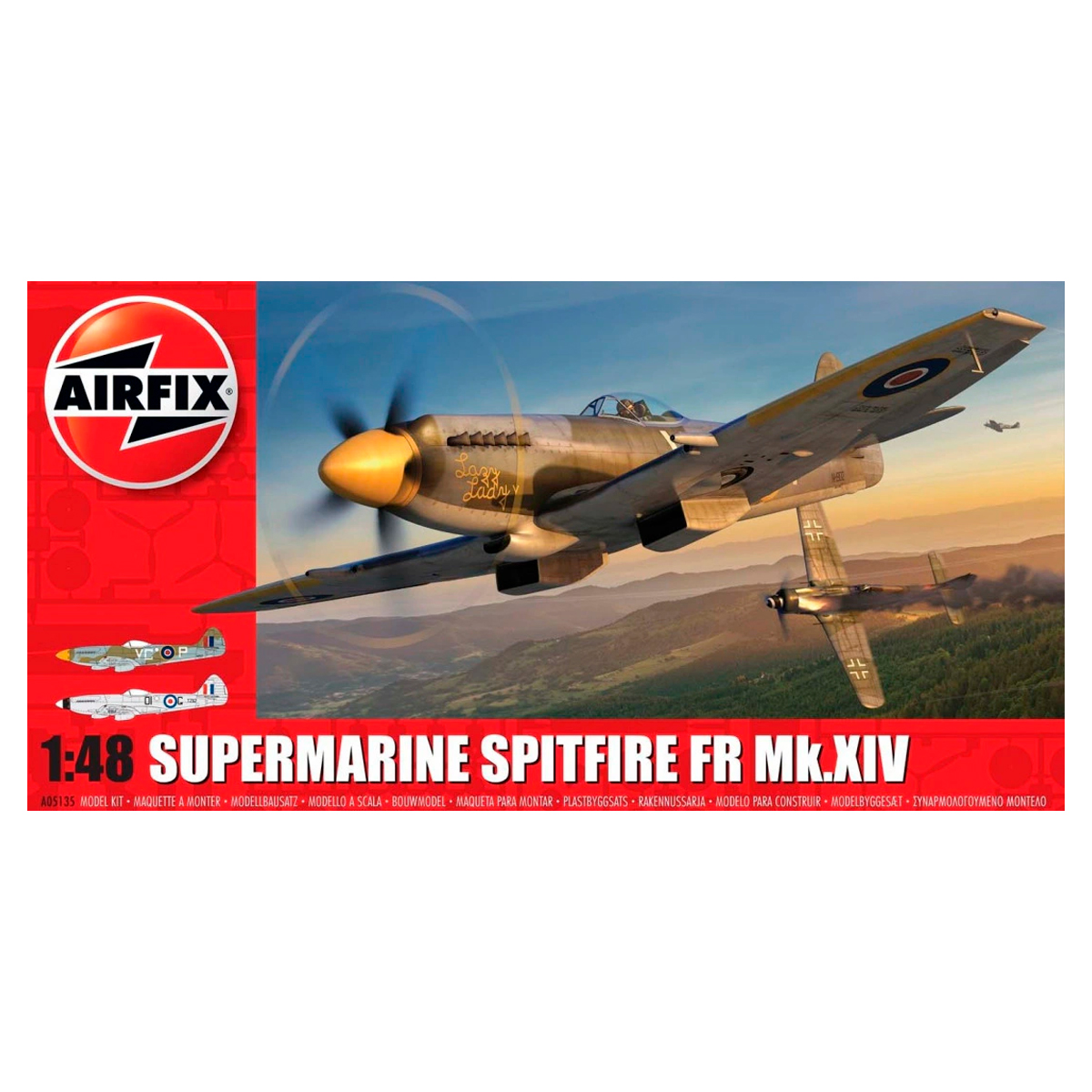
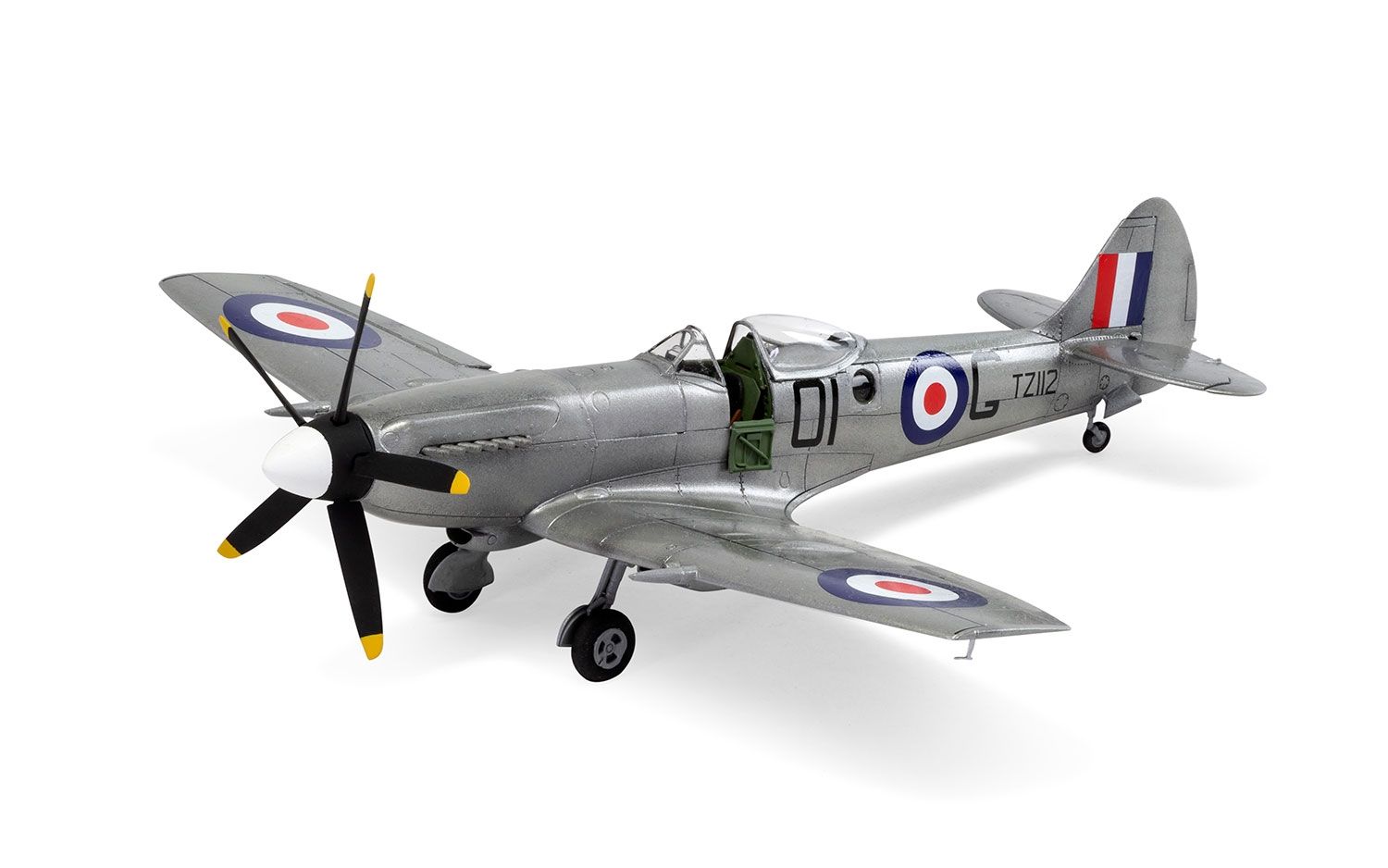
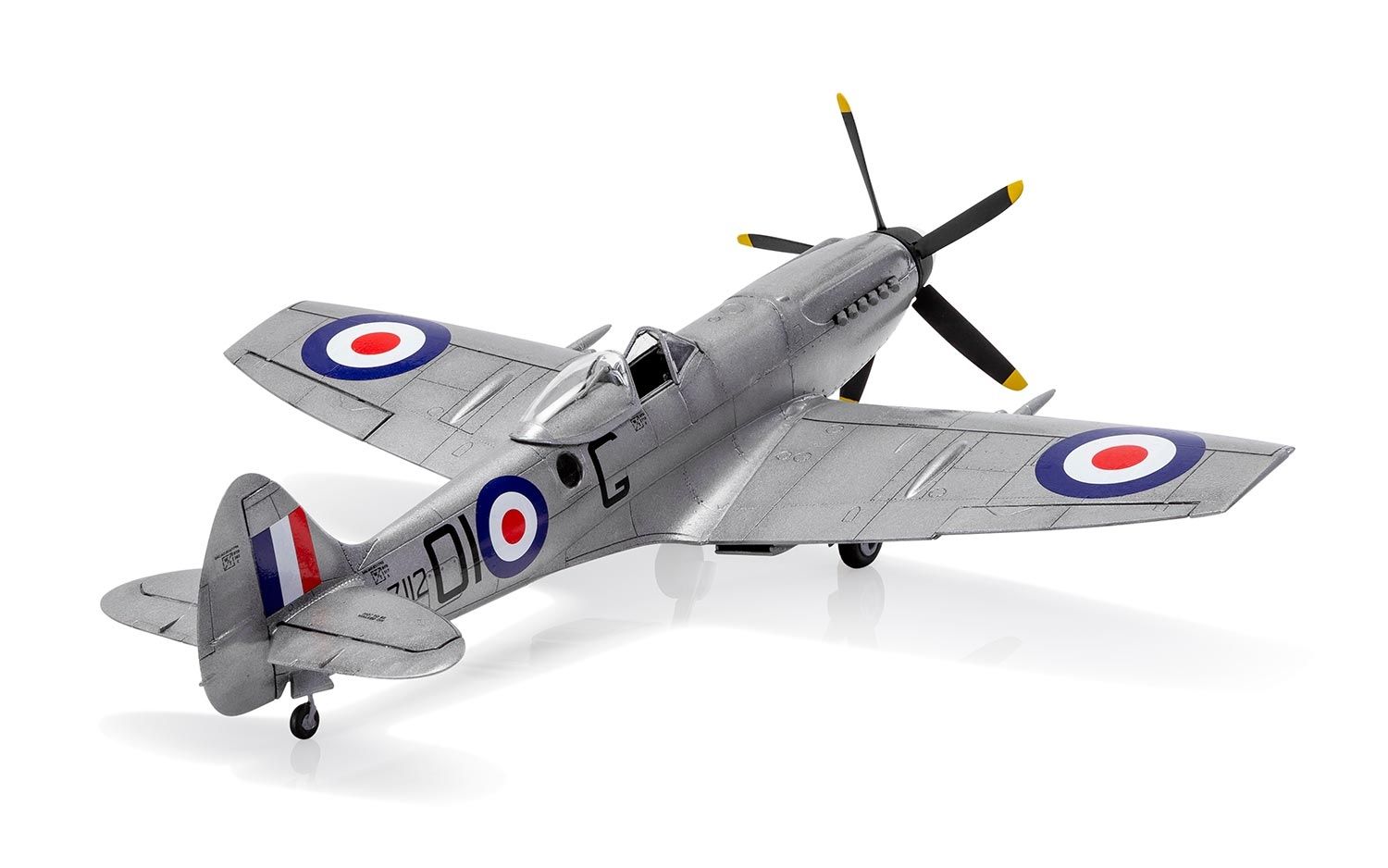


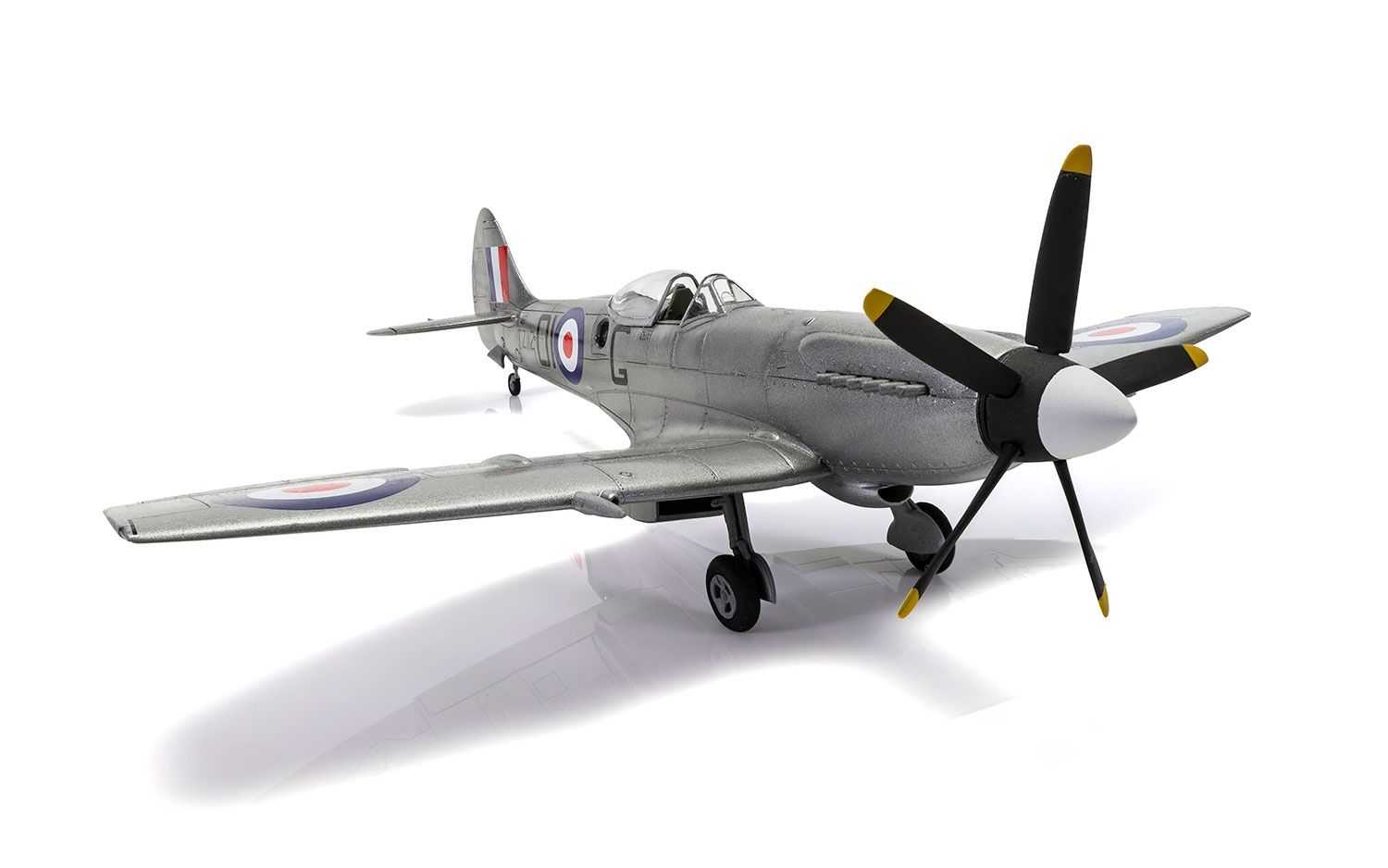

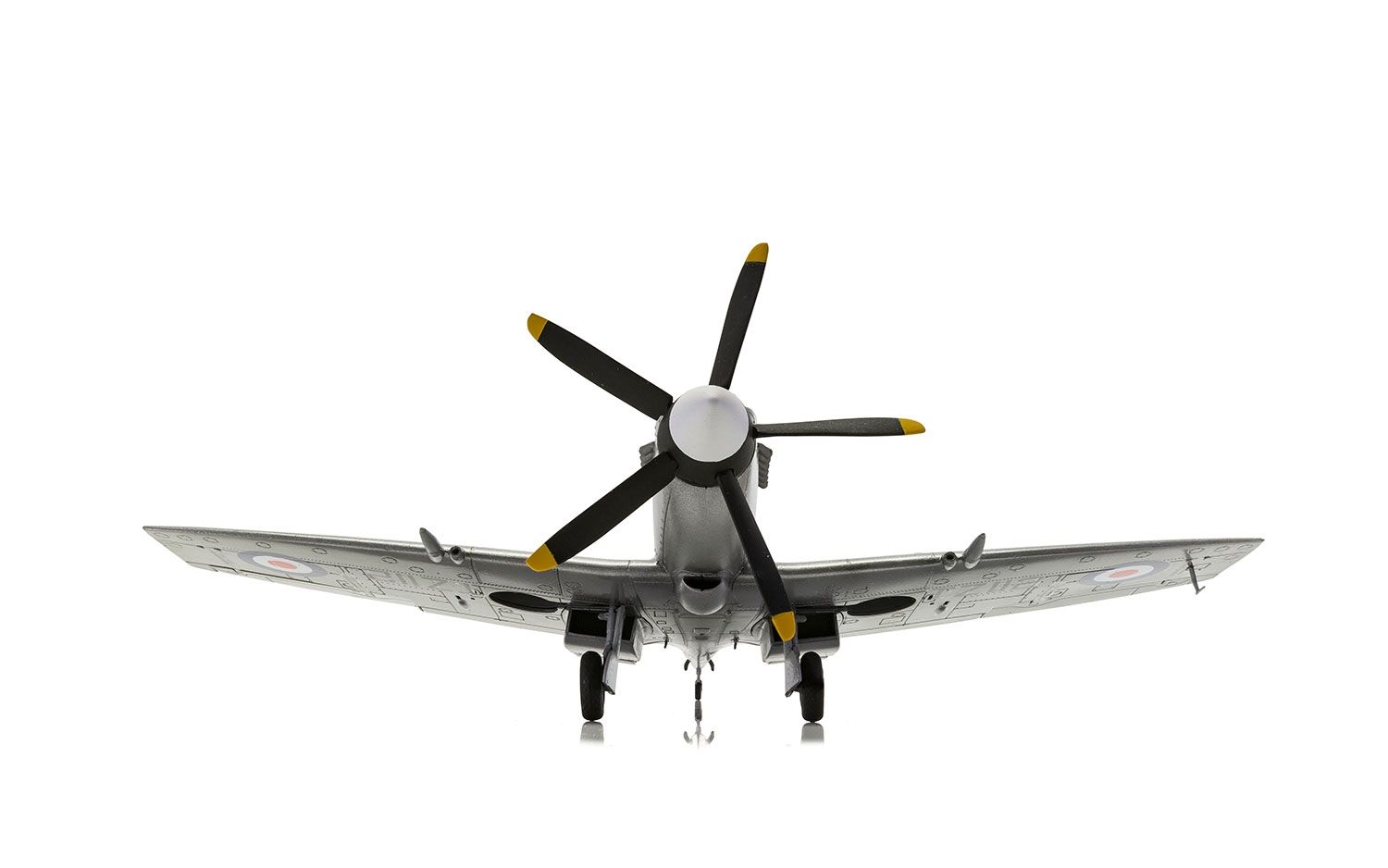


 Request of SDS product data file / Product security
Request of SDS product data file / Product security